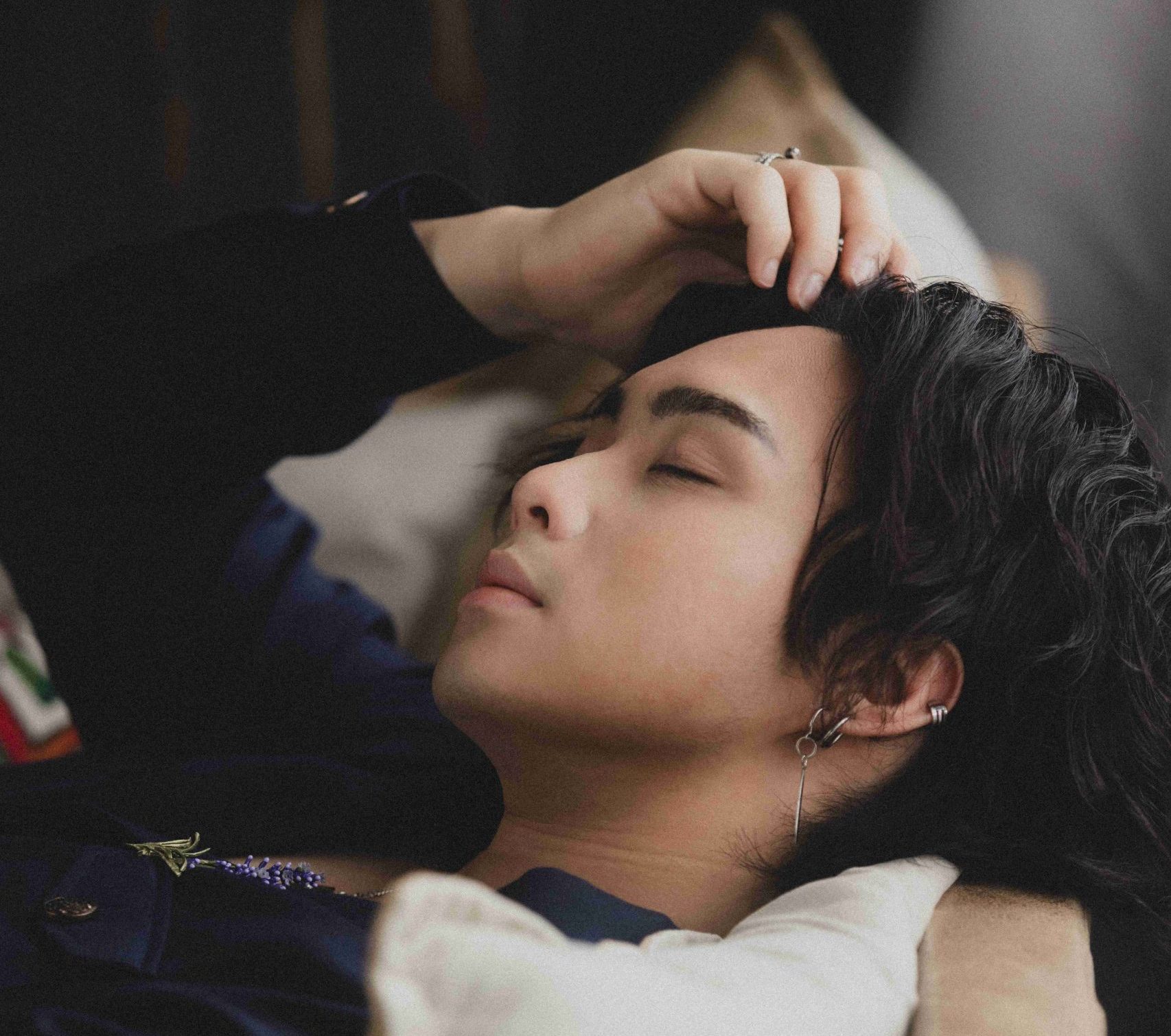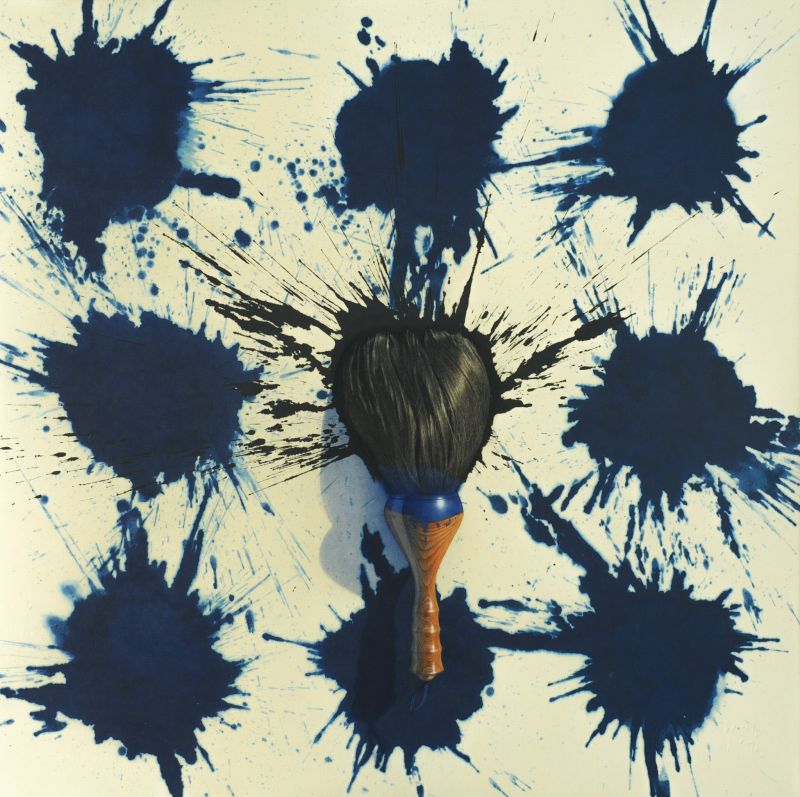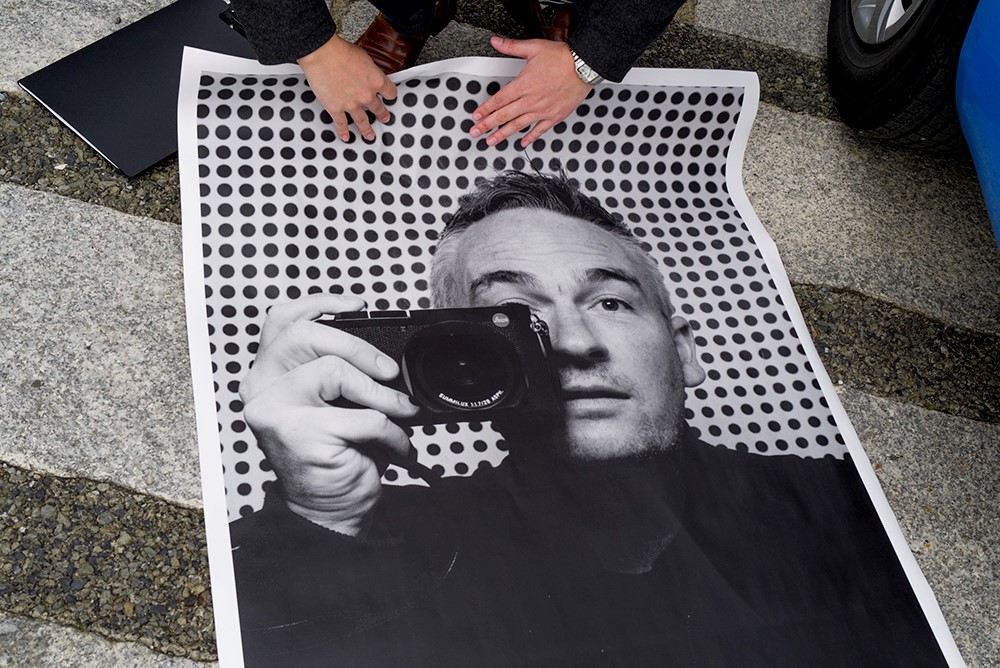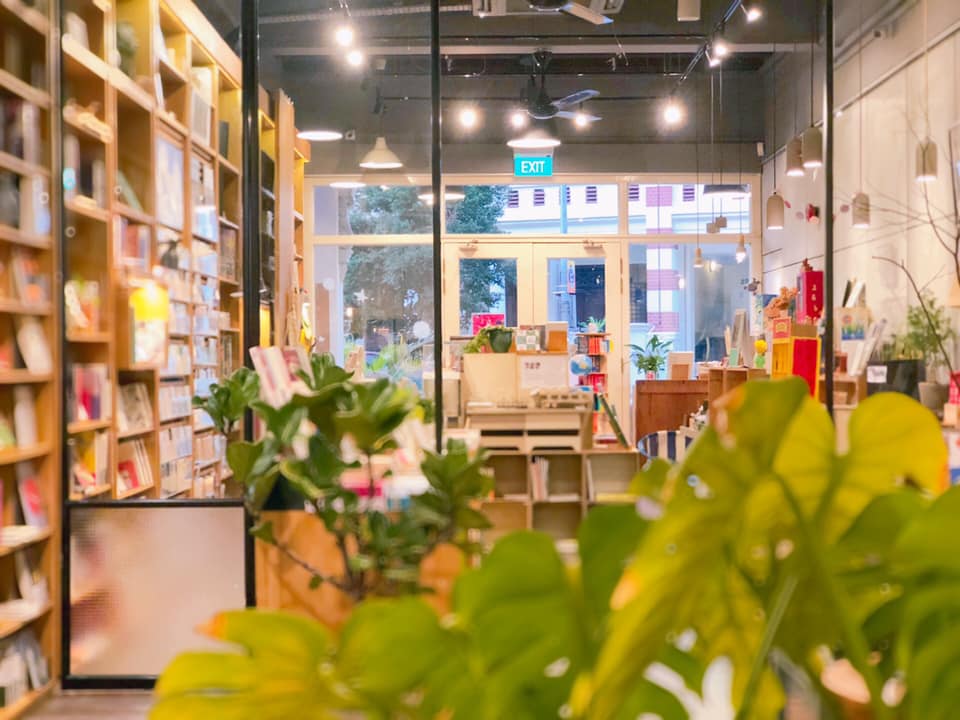How does one talk about mental health these days; especially without falling into the trap of shallow conversation, bolstered by feeble, one-off Instagram captions mourning the suicides of beloved celebrities; or well-meaning but stiff pleas to call your local helpline if you’re feeling down? A new exhibition at Gillman Barracks has decided to go the route of art, not as a brusque call-to-action, but a more sensitive exploration of how the mind tumbles.
Running from now through Jul 22 at Chan + Hori Contemporary, Breaking Waves curiously lends its support from pharmaceutical giant Johnson & Johnson. The exhibition comprises two parts curated by and featuring emerging curators and artists, who were selected overall by a jury of international mid-career curators, including Chan + Hori curatorial director Khai Hori.
Though entwined by purpose, both parts were curated independently. In Head spinning, loop creating, artist Kheyton Lim translates personal, subtle daily anxieties in his home into striking visual representations. Familiar sights like a makeshift prayer altar and a propped up mirror appear as commentary on religion and the ritual of getting ready in the morning respectively—stressors in both his and many other households. As an added layer, these tableaus were created within whitewashed drawers, drawing on Lim’s experience growing up amidst domestic violence, wherein his father used to ransack drawers and leave them open.
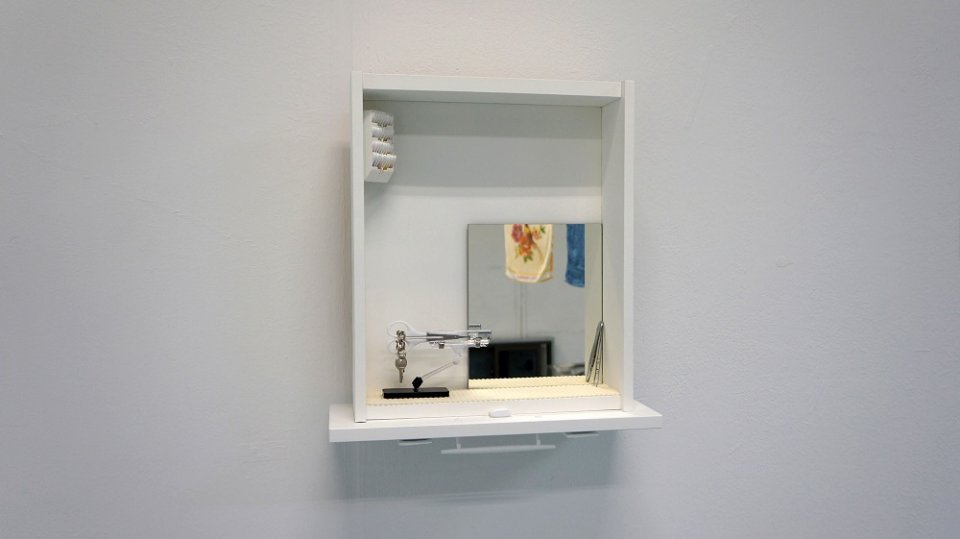
The Straightest I May Do, Kheyton Lim
There are other less nuanced pieces—like curator Nicolette Teo’s own contribution “Waves of Uncertainty”. Inspired by the crucial role breathing plays as a coping mechanism, she filled the room with light gauzy fabrics to create a sense of peace and airiness; as you pass through their movements mimic the rising and falling of the breath.
For The Deepest Blue, curators Racy Lim and Joella Kiu commissioned four locally based artists to create works inspired by or in response to a corresponding historical artist: specifically Virginia Woolf, Frida Kahlo, Helen Frankenthaler and Zelda Fitzgerald. With a less clear-cut focus on “talking about mental health”, the works explore water as a metaphor for the complexities of the mind. For example, artist Chloe Manasseh painted an abstract underwater scene to show the “ripple” effect in depression; just as things are more profound underwater than when viewed from above, something that seems trivial to one person can hold completely different weight to another.
Closing the exhibit, artist Tan Yang Er, given the word “respite”, crafted a mixed media installation of lace and clay around the idea of a runaway bride. The stillness of the water used to sculpt the clay represents that same stillness you feel before finally being able to take a breath of relief; like a weight off the shoulders of the runaway bride, said Tan.
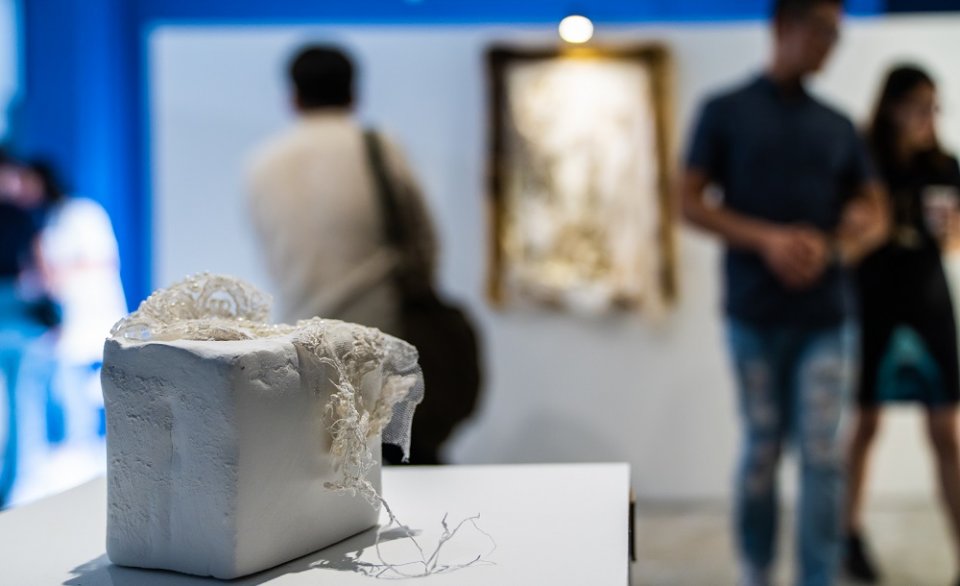
Tan Yang Er’s mixed media installation revolves around sculpted fabrics to tell the story of a runaway bride
In a jibe, perhaps, to many public art projects, Hori pointed out that Breaking Waves isn’t about “exhibiting artworks that are typically made by community.”
“The idea was for the curators and the artists to present their take on mental health in a creative, poetic way. Historically in the arts scene, it is something very classical—the idea of the distressed artist; you know Picasso, you know (Francisco) Goya,” said Hori. “All these famous artists went through bouts of depression and challenging things in their lives, but when you come out of it, you come out stronger; and you make works that speak to society for hundreds of years.”
Our conversation with Hori continues below.
When did the idea for an exhibition to explore mental health come about?
Despite their often frivolous image, artists are a real part of society and art is often used to deal with complex and taboo subject matters such as mental health. The idea came about after conversations with Johnson & Johnson Singapore, who wanted to do something unique and thought-provoking to encourage the public to think about mental health. J&J has a long-standing heritage supporting patients with mental health conditions and working to destigmatize the topic, and we shared the sentiment that society needs to provide platforms where more light can be shed on mental health. Artists habitually give back to society through their creativity, even if their contributions are often perceived as intangible in nature.
To put it candidly, “talking about mental health” seems to be trending in media and popular culture. How does Breaking Waves fit into that and/or go against the stereotype of shallow conversation?
Over the past couple of months there have been some high-profile cases of depression and suicide, which definitely shocked the world and sparked conversation on mental health. It’s a universal issue, and in most cases, silent killers, as it’s generally not talked about. We need to change mindsets—including our own—on how mental health is viewed to normalize the discussion. We hope that one day we can all feel free to speak about mental health and ask for help in the same way we would do if we had a physical illness, like a flu. This is what we hope to initiate with this edition of Breaking Waves—a poetic, yet open, honest reflection and discussion on mental health from the perspectives of our own emerging artists and curators.
As part of the jury vetting the exhibitions, what was it about The Deepest Blue and Head spinning, loop creating that made them viable to carry out the conversation on mental health?
As part of a key thrust of D/SINI festival, Breaking Waves intends to provide platforms for Singapore-based emerging curators and artists to present and harness their thought and skills on a challenging, public platform. As for what it was that led to the selection of (the exhibits), I quote some comments from the jury here:
On Head spinning, loop creating: “I find this exhibition very compelling, both in its collaborative process and its conceptual output. Group shows are often themselves landscapes for anxiety, with artists traditionally not meeting each other or knowing much about the works that theirs will be shown with. The curator here thoughtfully considers this dynamic through social and creative process, and the scheduled crits become their own kind of therapy sessions. Through this, Head spinning, loop creating not only exhibits anxiety but also offers the artists and audiences potential remedies, or at least valuable insight.” –Adriel Luis, curator (Digital & Emerging Media), Smithsonian Asian Pacific American Center
On The Deepest Blue: “The proposal seems to be made after deep deliberation and the multiple metaphors of water are effectively conjure up images of vulnerability in urban society.” –Eriko Kimura, curator, Yokohama Museum of Art
You mentioned that there’s the archetypal “Distressed Artist”. Isn’t an exhibition like this counterproductive to the message, in almost glorifying artists and their pain?
The artists and artworks here do not represent a glamorization of the stereotypical “distressed artist,” but as I mentioned earlier, a poetic and if any, an introspective take on mental health. Art is a language beyond the written and spoken, it transgresses multiple dimensions and illicit dialogues between itself and the participant, often even after an encounter with it.
Artists today are professionals who work alongside curators, project managers, public relations specialists, galleries, museums, universities and other respectable institutions. They cannot confine themselves within a room, away from the public with the expectation of being discovered and celebrated for their genius. Aside from its exhibition theme, Breaking Waves demonstrates this need for professionalism with the participation of a highly qualified international jury, curators, project managers, mentors, all under the banner of a bonafide, grounds-up festival.
To add, Adriel Luis from the Smithsonian commented: “What makes Breaking Waves powerful is that it recognizes that, when we experience art, we’re really experiencing ourselves. We look at objects and paintings while really looking at ourselves, and our interpretations of art are a kind of a mirror. The exhibitions selected should recognize the responsibility this holds, and that there will very likely be audiences who come to the show seeking answers to questions that no single artwork or exhibition can encompass.”
What do you hope for visitors to take away from Breaking Waves?
Firstly, I’d like to say that this exhibition is for everyone – families, young people, older people – the idea is that we can all take something away from it. It’s not just for patients clinically diagnosed with a mental health condition, or for those who might know someone recovering. We’ve purposefully designed the exhibition to allow everyone to experience it in different and personal ways. As visitors walk around the space and absorb the artwork, we hope that it will spark reflection and discussion on mental health – that of their own, and others – and in the long-term we hope that this will help towards destigmatizing the issue.
Breaking Waves runs through Jul 22 at Chan + Hori Contemporary, #02-09 Gillman Barracks, 6 Lock Rd.


